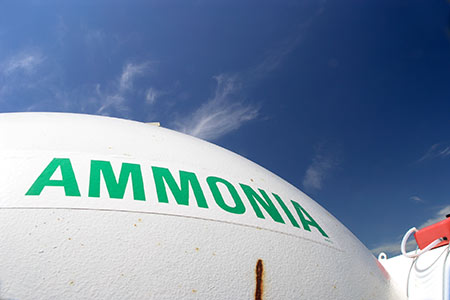What is Green Ammonia?
The Government of India is recently inviting bids for Green Ammonia Projects to reduce the import dependence of the country. As per the Union power and new and renewable energy Ministry, the bids for Green Ammonia projects will be conducted by SECI (Solar Energy Corp. of India Ltd).
Why Green Ammonia Projects?
To produce fertilisers, India is importing a significant volume of ammonia every year. In 2019, the total imports of ammonia amounted to 478 billion USD. The main segments that consume ammonia are Urea and Ammonium phosphate. These segments account to 93.8% of ammonia consumption in the country. Since 2008, India has been a net importer of ammonia and it is expected to continue on similar trend until 2022. The Green Ammonia Projects are to be launched to change this scenario.
What is Green Ammonia?
Green ammonia refers to ammonia, which has been produced through a process that is 100% renewable and carbon-free. One way of making Green Ammonia is by using the hydrogen from water electrolysis and nitrogen separated from air. These two elements are then fed into the Haber process. In the process, nitrogen and hydrogen react together in high pressure and temperature to produce Ammonia.
Currently, ammonia making is not a green process. It is now made from methane. It is called Steam Methane Reforming (SMR) process. Around 90% of carbon dioxide is produced from SMR process.
Why is Ammonia highly important?
- 80% of Ammonia produced in the world is used in Agriculture as fertilizer. The ammonia in the fertilizers releases nitrogen, which is an essential nutrient for the growth of crops. Nitrogen is the key element in the nucleic acids, DNA and RNA and thus is important to all biological molecules.
- Excess nitrogen in the soil is called Eutrophication.
- Ammonia is the major part of nitrogen cycle.
Month: Current Affairs - December, 2020


